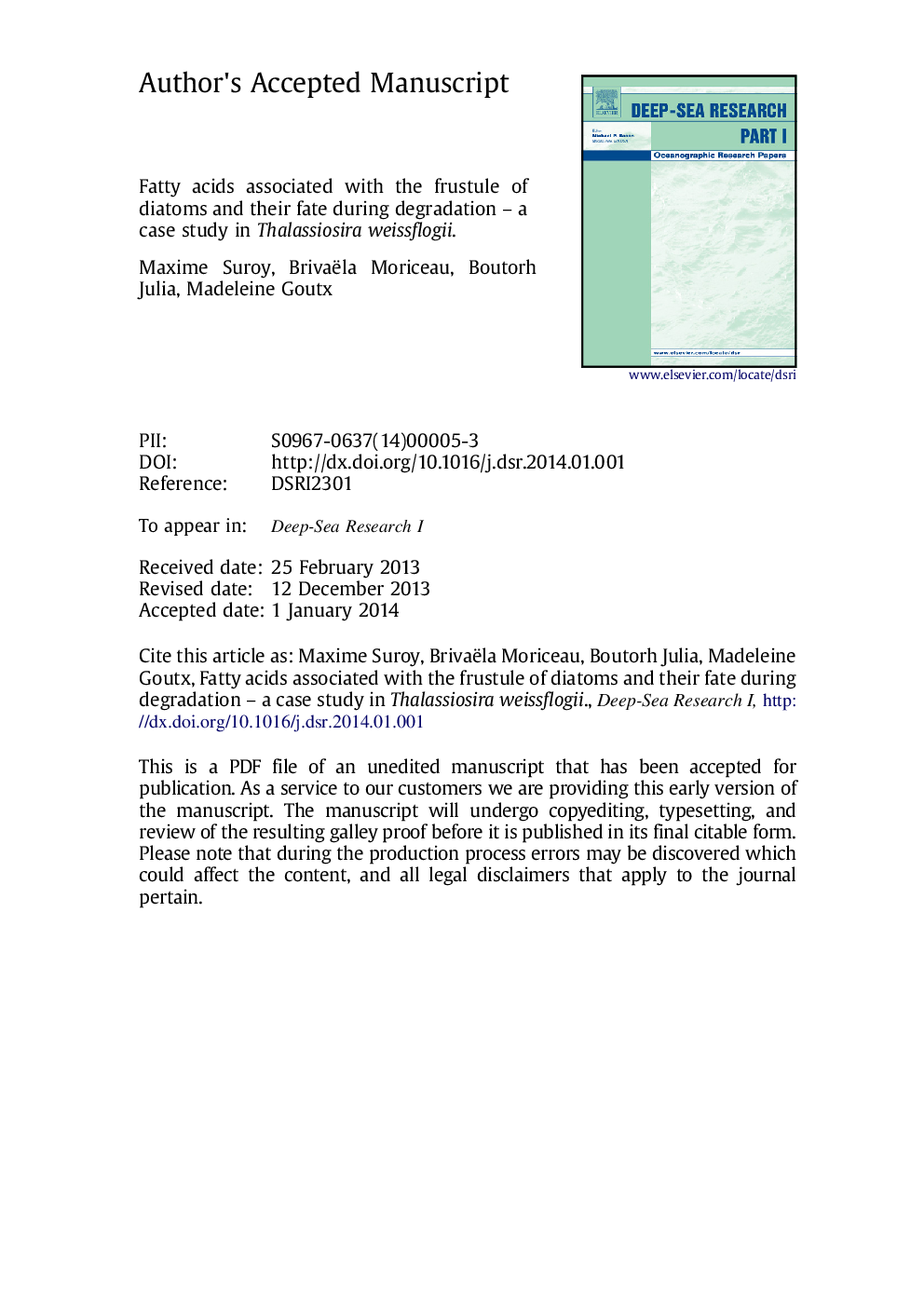| Article ID | Journal | Published Year | Pages | File Type |
|---|---|---|---|---|
| 6383725 | Deep Sea Research Part I: Oceanographic Research Papers | 2014 | 46 Pages |
Abstract
Diatoms are major actors in the export of organic carbon out of the euphotic zone. Yet, the processes linking biogenic silica and carbon sedimentation fluxes to deep oceanic layers remain unclear. Analysing organic fractions in biominerals is challenging because efficient cleaning often led to structural alteration of organic molecules. Hence, although lipids are widely used as biogeochemical markers in ocean flux study, few studies have dealt with the lipids that are associated with frustules. In the present study, a protocol was set up to extract and quantify the fatty acids associated to the frustule of the diatom species Thalassiosira weissflogii. The protocol involves solvent extraction of diatom external lipids, followed by clean frustule dissolution by 4% NaOH during 1 h at 95 °C and subsequent solvent re-extraction of frustule-associated lipids. Results confirmed that this protocol was efficient first, to isolate the frustule from the rest of the cellular organic carbon and second to extract and quantify fatty acids (FA) associated to frustules of this species. FA composition of the frustules was significantly different from that of the whole cells consisting primarily of 14:0, 16:0 and 18:0 FA, as well as a smaller portion of 16:1 and 18:1 unsaturated FA. Frustule-associated FA constituted 7% of the total FA and 1.8% of the total POC. The 30 days T. weissflogii degradation/dissolution experiment suggested that frustule FA 14:0 and 16:0 were mainly associated with the bSiO2 phase dissolving slowly as no degradation of this pool was measured despite 78% frustule dissolution. At the end of the degradation experiment, this pool constituted 5.8% of the remaining total POC suggesting an effective protection by the frustule through strong interaction with the biogenic silica which is consistent with the correlation observed at depth between Si and POC sedimentation fluxes.
Related Topics
Physical Sciences and Engineering
Earth and Planetary Sciences
Geology
Authors
Maxime Suroy, Brivaëla Moriceau, Julia Boutorh, Madeleine Goutx,
